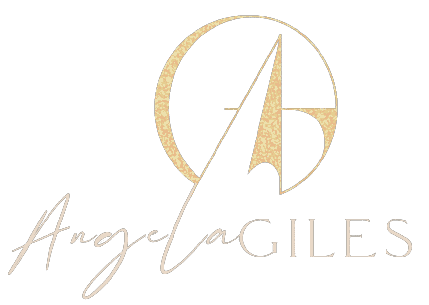We may earn money or products from the companies mentioned in this post.
Grabbing your audience’s attention is a significant challenge in digital marketing. As a business owner or coach, you know just how vital a well-designed sales funnel is to convert visitors into loyal customers.

The secret to making this happen? Effective lead magnets. These are the compelling offers that attract prospects into your sales funnel. Let’s explore these creative lead magnet ideas, each with easy steps to create them and tips to make them work for your audience!
Need fresh ideas for lead magnets to improve your sales funnel? Book a call with me and let’s create strategies that drive amazing results.
What Is A Lead Magnet?
A lead magnet is a marketing tool designed to attract potential customers. It involves offering something valuable, such as a free guide or discount, in exchange for their contact details, typically their email address.
The idea is to provide a free item or service that is relevant and useful to your target audience.
This incentivizes them to share their contact details with you. Once you have their information, they become leads you can nurture through your sales funnel with targeted marketing efforts.
The process works by creating a lead magnet that addresses a specific need or interest of your potential customers. You then promote this lead magnet on your website, social media, or other platforms.
When people sign up to get your lead magnet, they share their email address with you. This allows you to keep in touch with them through email.
You can send more helpful content, special deals, or details about your offer in your follow-up emails. Then, you can gradually lead them towards buying something.
Basically, lead magnets start the conversation with potential customers by giving them something useful right away and laying the groundwork for ongoing interaction.
1. Access to Private Groups or Communities
Creating a private group or community is like setting up a virtual meeting room for your most engaged customers. It’s a space where they can chat, share ideas, and give you direct feedback.
Think of it as your business’s own private club on Facebook or Slack, where the real magic happens in those everyday interactions.
For instance, if you’re a startup coach, imagine the value of a space where your clients can mingle, swap stories, and learn from each other’s experiences.
You can also share case studies, especially those involving community members, to inspire and educate. It’s also a great idea to host virtual meetups or guest speaker events, offering networking opportunities exclusive to group members.
2. Templates and Toolkits
Templates or toolkits are ready-to-use resources designed to simplify specific tasks or processes in a business. They are a set of tools, often in the form of documents, checklists, or software, that help streamline operations or marketing efforts.
A real estate coach might create a “Home Selling Toolkit,” which includes templates for property listings, marketing materials, and client communication scripts.
To keep these tools sharp and effective, it’s a good idea to update them every now and then. Keep an eye on the latest trends and best practices, and update your toolkits accordingly.
This way, they stay relevant and valuable. Moreover, listening to what people say about your toolkits is super helpful. This feedback loop enhances your products and keeps your audience engaged with your brand.
3. Exclusive Video Content
Exclusive video content refers to unique, high-quality videos that you offer only to a specific audience, not available to the general public.
This type of content can be engaging and valuable, especially when it covers topics or provides insights that viewers can’t easily find elsewhere.
Let’s say you’re a leadership coach. You could create a series of videos on “Effective Team Management Techniques.” These videos could cover everything from communication skills to conflict resolution, specifically tailored for new managers and team leaders.
You can host these videos on platforms like YouTube or Vimeo, but keep them unlisted or on a private channel. This way, only those who have subscribed can view them.
To use these videos as a lead magnet, you could offer a teaser or a single full video for free, available to anyone who signs up with their email.

4. Educational Ebooks
An educational ebook is a digital book that provides comprehensive information on a particular topic, often addressing specific problems or questions in your field.
They’re useful for diving deep into topics, explaining complex concepts, or offering step-by-step guidance.
Create an ebook on a highly relevant and valuable topic to your target audience. For example, if you’re a life coach, you might write an ebook titled “5 Steps to Balancing Personal and Professional Life.”
This ebook should provide practical advice, personal stories, or unique insights your audience can’t easily find elsewhere.
Once it’s ready, offer it for free on your website or through social media, but with a catch – people need to provide their email address to download it.
This way, you’re not just giving away valuable content for free. You’re also building your email list, a crucial asset in digital marketing.
Need fresh ideas for lead magnets to improve your sales funnel? Book a call with me and let’s create strategies that drive amazing results.
5. Comprehensive Guides or Reports
These are detailed documents that offer insights into a specific industry or topic, often containing data, statistics, and case studies.
Business coaches can produce a report titled “The 2023 Small Business Growth Handbook.”
This guide could cover various aspects of small business development, including recent market trends, success stories, and actionable strategies for growth.
To make your guides or reports more engaging, add infographics using tools like Piktochart. This makes complex data look interesting and easy to understand. A good design keeps your readers interested and helps them learn more easily.
Then, promote your guides or reports by sharing them everywhere you can. Put them up on your website, talk about them on your social media, include them in your email newsletters, and maybe even team up with others in your industry to spread the word further.
6. Interactive Webinars
Interactive webinars are live online workshops or presentations that allow you to connect and interact with your audience in real time.
For instance, as a financial coach, hosting a webinar on a topic like “Investment Strategies for Uncertain Times” can attract people interested in financial planning and stability.
To set up a webinar, choose a platform like Zoom or WebinarJam that’s reliable and user-friendly. Make sure your topic is relevant and offers practical insights or solutions. It’s important to provide content your audience can apply to their lives or businesses.
During the webinar, include interactive elements such as live polls, Q&A sessions, or even breakout discussions.
Also, consider recording your webinar. The recording can be offered later as a resource for those who couldn’t attend live or as an incentive for new email subscribers. This approach extends the life and value of your content.

7. Checklists or Cheat Sheets
Making a “Social Media Posting Checklist” is helpful for small business owners who struggle with organizing their online marketing efforts.
This checklist gives them a simple guide on what to post, when to post, and how to do it effectively.
You can easily create these materials using basic programs like Microsoft Word. The key is to deliver clear, actionable steps that your audience can easily follow and implement.
You can also make different checklists for various parts of marketing, like creating content, optimizing for search engines (SEO), or doing email campaigns. By doing so, you’re addressing a broad range of topics that your audience may find useful.
8. Free Trials or Demos
Free trials or demos allow potential customers to try your service or product. This approach is particularly effective in industries like software, where experiencing the product firsthand can significantly influence a customer’s purchase decision.
Let’s say you run a software company. You could offer a 14-day free trial of your project management tool.
During the trial period, provide support and guidance to help users get the most out of your product. This can include tutorial videos, FAQ sections, or even live support. Offering this assistance improves the user experience and demonstrates your commitment to customer service.
After the trial ends, follow up with the participants. You can send them an email asking for feedback, offering special deals, or encouraging them to subscribe to the full version of your product or service.
This follow-up is a critical step in converting trial users into paying customers.
9. Email Course Series
An email course series is a sequence of educational emails sent over a set period, each one building on the last. It’s a neat way to keep subscribers hooked because they keep getting useful content straight into their inbox.
For example, a health coach might create a “7-Day Clean Eating Challenge.” This course could include daily emails with recipes, nutritional tips, and encouragement, helping subscribers to make healthier food choices.
An email automation tool like Mailchimp is crucial for efficiently managing and scheduling your course. You set up the course content in advance, and the tool automatically sends out the emails at the designated times.
Across the series, you can drop in little mentions or suggestions about what you offer. It’s a subtle way to lead people toward buying something without pushing it too hard.
10. Quizzes or Assessments
Interactive quizzes or assessments are engaging tools that offer personalized feedback based on the user’s responses. They’re a mix of fun and learning, helping users discover more about themselves or a topic.
Career coaches, for example, can create a quiz called “Discover Your Ideal Career Path” with questions about what the user likes, their skills, and what they want in a job, guiding them to careers they might enjoy.
You can build these quizzes with tools like Typeform, focusing on making them look good and easy to use. The main thing is to ask questions that speak to your audience so the results they get are genuinely helpful.
These quizzes are also helpful in understanding your audience better. You can see patterns in their answers, which lets you customize your marketing more.
Say someone does the career path quiz and shows interest in a particular field. You can then follow up with resources or services that match that interest.

Create Lead Magnets That Convert
Adding these lead magnets to your sales funnel is a game-changer for pulling in and keeping clients. It’s all about picking the right ones – those that truly resonate with your audience and bring real value.
Match them with your business objectives and what your audience needs. Start using them now and see your sales funnel flourish with qualified leads ready to connect with your business.
Need fresh ideas for lead magnets to improve your sales funnel? Book a call with me and let’s create strategies that drive amazing results.


